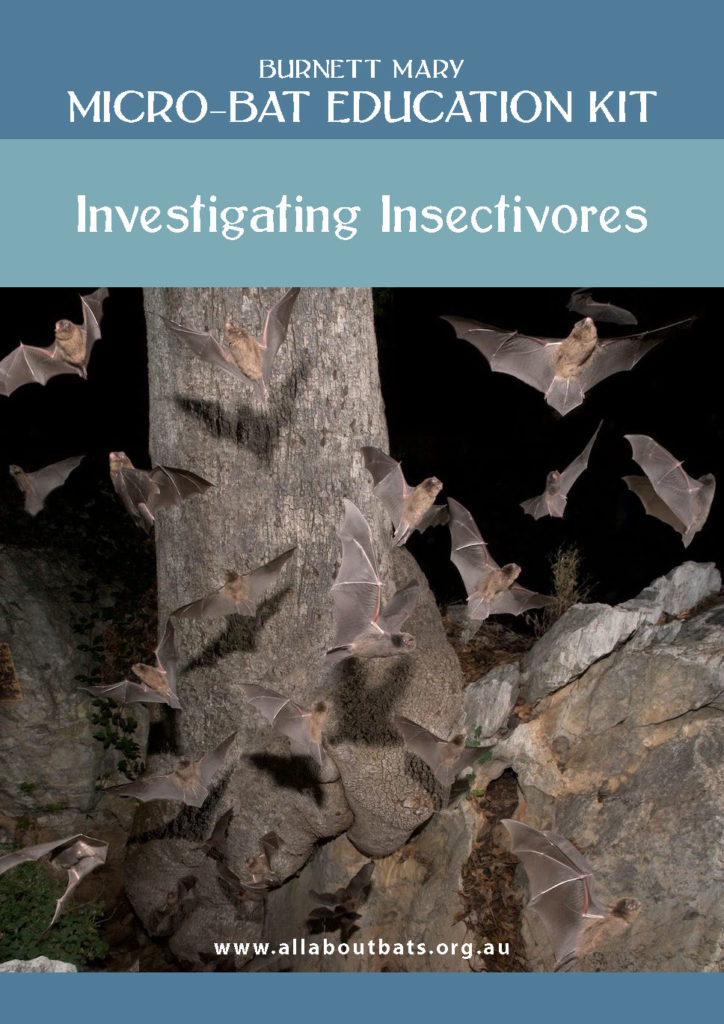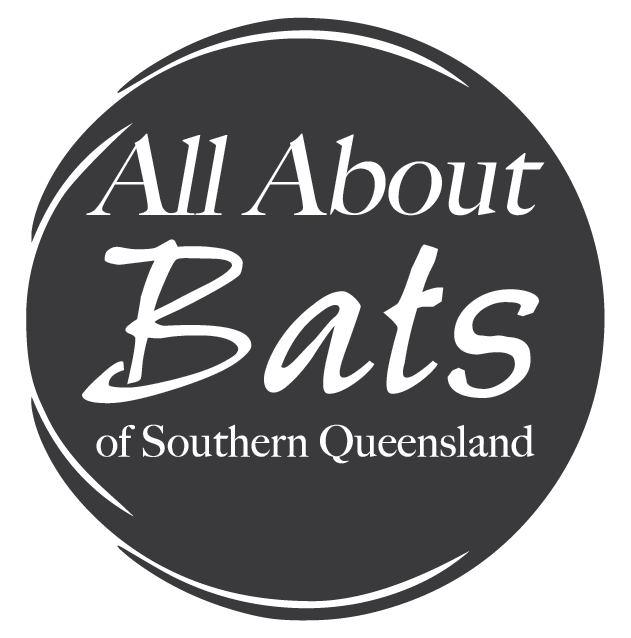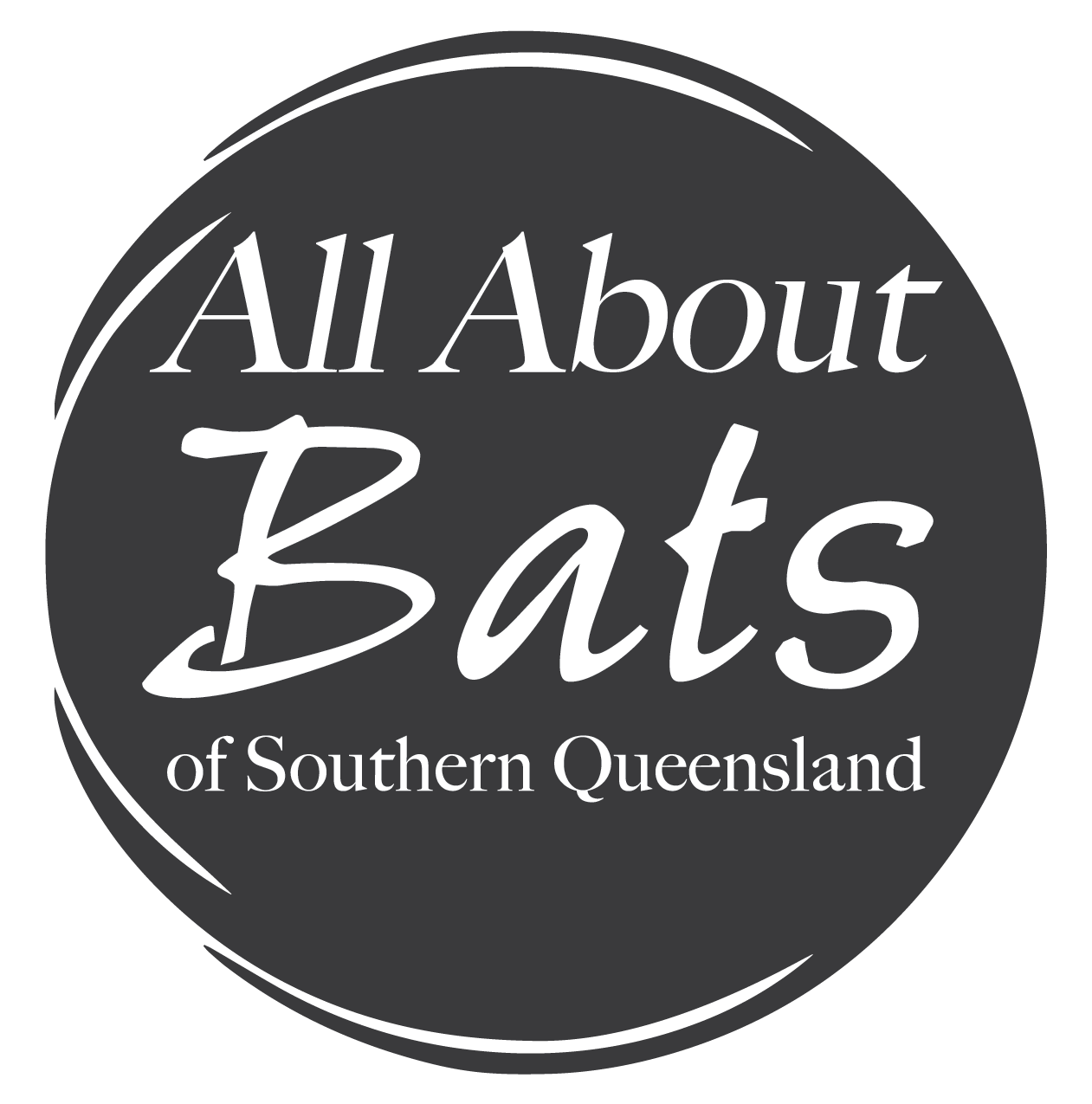The Burnett Mary Micro-bat Education Kit: Investigating Insectivores was developed to improve the longterm survival and awareness of micro-bats in the Burnett Mary region of Queensland.
The education kit introduces teachers and students to the important role that micro-bats play in our lives, such as consuming millions of insects every night – an essential part of keeping our environment healthy!
Although it has been developed to fit in with the year 4 and 5 curriculum, this resource can be used and adapted to higher year levels by individual teachers.

Units of Work
Introduction – All About Micro-bats
This unit introduces students to the world of micro-bats. It introduces the basic fundamentals of micro-bats, their biology, how they use echolocation to find food, their habitat and raises awareness of the important role they play in our environment regarding insect control.
DOWNLOAD All About Micro-bats PowerPoint Presentation
Unit 1 – Living in a micro-bat world
This YEAR 4 UNIT looks at the reproduction, feeding relationships and habitat of micro-bats in Australia. It introduces the importance of looking after entire ecosystems as a micro-bat’s life is embedded in a complex web of predator-prey and habitat relationships.
Lesson 1.1 Micro-bat life cycle: Students will investigate the similarities and differences between life-cycle of different species and learn about the eastern bent-wing bat’s life-cycle.
Lesson 1.2 Hungry, hungry bats: Students will learn the importance of food chains and how ecosystems are a complex web of feeding relationships. Students are introduced to the terms Food Chain, Producer, Consumer, Decomposer, Herbivore, Carnivore, Omnivore, Predator and Prey. Students use mathematics to calculate populations, consumption of insects and ecosystem interactions.
Lesson 1.3 Hollows, caves and houses: Students will learn about the habitat requirements of micro-bats and the importance of looking after entire ecosystems.
DOWNLOAD Micro-bat Habitat PowerPoint Presentation
Unit 2 – Adaptations and changing environments
This YEAR 5 UNIT looks at two of the key adaptations of micro-bats – the ability to fly and use echolocation to find food. It also examines how humans have changed natural environments and that a key to protecting micro-bats is through conservation efforts such as installation of artificial bat houses.
Lesson 2.1 Flying mammals: Students are introduced to the term Adaptation and look at how micro-bats have adapted over time to develop specialised features that help them survive. In this lesson, students focus on one adaptation – flying.
DOWNLOAD Bat Wing Basics Poster
Lesson 2. 2 Echolocation: Students learn about micro-bats most defining adaptation – the ability to navigate and find their prey using echolocation. This will be achieved through using videos and conducting fun experiments.
DOWNLOAD Echolocation Made Easy Poster
Echolocation by Batney Ears
Bat Echolocation by Incredible Bats
Lesson 2. 3 Bat houses: Students will learn about the impacts humans have had on micro-bat habitat and the importance of looking after entire ecosystems. Students will research and design a diorama of a bat box before constructing their own bat houses.
DOWNLOAD All About Micro-bats PowerPoint Presentation
DOWNLOAD Micro-bat Habitat PowerPoint Presentation
CONTACT Fraser Coast Micro-Bats Group
This resource was developed by by education consultants from PeeKdesigns – Creative Education Solutions.

